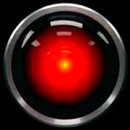I was wrong, the estimates were even higher than that:
http://en.wikipedia.org/wiki/Operation_DownfallCasualty predictions varied widely but were extremely high for both sides: depending on the degree to which Japanese civilians resisted the invasion, estimates ran into the millions for Allied casualties[1] and several times that number for total Japanese casualties






 Reply With Quote
Reply With Quote












.jpg)

